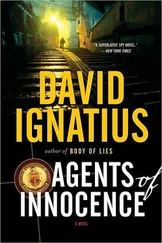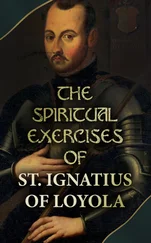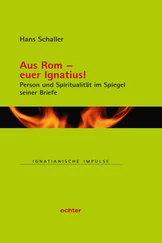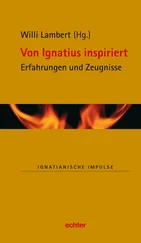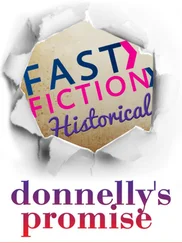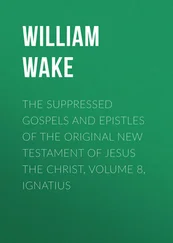Ignatius Donnelly - Antediluvian world
Здесь есть возможность читать онлайн «Ignatius Donnelly - Antediluvian world» весь текст электронной книги совершенно бесплатно (целиком полную версию без сокращений). В некоторых случаях можно слушать аудио, скачать через торрент в формате fb2 и присутствует краткое содержание. Жанр: Старинная литература, на русском языке. Описание произведения, (предисловие) а так же отзывы посетителей доступны на портале библиотеки ЛибКат.
- Название:Antediluvian world
- Автор:
- Жанр:
- Год:неизвестен
- ISBN:нет данных
- Рейтинг книги:5 / 5. Голосов: 1
-
Избранное:Добавить в избранное
- Отзывы:
-
Ваша оценка:
- 100
- 1
- 2
- 3
- 4
- 5
Antediluvian world: краткое содержание, описание и аннотация
Предлагаем к чтению аннотацию, описание, краткое содержание или предисловие (зависит от того, что написал сам автор книги «Antediluvian world»). Если вы не нашли необходимую информацию о книге — напишите в комментариях, мы постараемся отыскать её.
Antediluvian world — читать онлайн бесплатно полную книгу (весь текст) целиком
Ниже представлен текст книги, разбитый по страницам. Система сохранения места последней прочитанной страницы, позволяет с удобством читать онлайн бесплатно книгу «Antediluvian world», без необходимости каждый раз заново искать на чём Вы остановились. Поставьте закладку, и сможете в любой момент перейти на страницу, на которой закончили чтение.
Интервал:
Закладка:
Religious Beliefs.—The Guanches of the Canary Islands, who were probably a fragment of the old Atlantean population, believed in the immortality of the soul and the resurrection of the body, and preserved their dead as mummies. The Egyptians believed in the immortality of the soul and the resurrection of the body, and preserved the bodies of the dead by embalming them. The Peruvians believed in the immortality of the soul and the resurrection of the body, and they too preserved the bodies of their dead by embalming them. “A few mummies in remarkable preservation have been found among the Chinooks and Flatheads.”
(Schoolcraft, vol. v., p. 693.) The embalmment of the body was also practised in Central America and among the Aztecs. The Aztecs, like the Egyptians, mummified their dead by taking out the bowels and replacing them with aromatic substances. (Dorman, “Origin Prim. Superst.,” p.
173.) The bodies of the kings of the Virginia Indians were preserved by embalming. (Beverly, p. 47.)
Here are different races, separated by immense distances of land and ocean, uniting in the same beliefs, and in the same practical and logical application of those beliefs.
The use of confession and penance was known in the religious ceremonies of some of the American nations. Baptism was a religious ceremony with them, and the bodies of the dead were sprinkled with water.
Vestal virgins were found in organized communities on both sides of the Atlantic; they were in each case pledged to celibacy, and devoted to death if they violated their vows. In both hemispheres the recreant were destroyed by being buried alive. The Peruvians, Mexicans, Central Americans, Egyptians, Phoenicians, and Hebrews each had a powerful hereditary priesthood.
The Phoenicians believed in an evil spirit called Zebub; the Peruvians had a devil called Cupay. The Peruvians burnt incense in their temples.
The Peruvians, when they sacrificed animals, examined their entrails, and from these prognosticated the future.
I need not add that all these nations preserved traditions of the Deluge; and all of them possessed systems of writing.
The Egyptian priest of Sais told Solon that the myth of Phaethon, the son of Helios, having attempted to drive the chariot of the sun, and thereby burning up the earth, referred to “a declination of the bodies moving round the earth and in the heavens” (comets), which caused a “great conflagration upon the earth,” from which those only escaped who lived near rivers and seas. The “Codex Chimalpopoca”—a Nahua, Central American record—tells us that the third era of the world, or “third sun,” is called, Quia Tonatiuh, or sun of rain, “because in this age there fell a rain of fire, all which existed burned, and there fell a rain of gravel;” the rocks “boiled with tumult, and there also arose the rocks of vermilion color.” In other words, the traditions of these people go back to a great cataclysm of fire, when the earth possibly encountered, as in the Egyptian story, one of “the bodies moving round the earth and in the heavens;” they had also memories of “the Drift Period,” and of the outburst of Plutonic rocks. If man has existed on the earth as long as science asserts, he must have passed through many of the great catastrophes which are written upon the face of the planet; and it is very natural that in myths and legends he should preserve some recollection of events so appalling and destructive.
Among the early Greeks Pan was the ancient god; his wife was Maia. The Abbe Brasseur de Bourbourg calls attention to the fact that Pan was adored in all parts of Mexico and Central America; and at Panuco, or Panca, literally Panopolis, the Spaniards found, upon their entrance into Mexico, superb temples and images of Pan. (Brasseur’s Introduction in Landa’s “Relacion.”) The names of both Pan and Maya enter extensively into the Maya vocabulary, Maia being the same as Maya, the principal name of the peninsula; and pan, added to Maya, makes the name of the ancient capital Mayapan. In the Nahua language pan, or pani, signifies “equality to that which is above,” and Pentecatl was the progenitor of all beings. (“North Americans of Antiquity,” p. 467.) The ancient Mexicans believed that the sun-god would destroy the world in the last night of the fifty-second year, and that he would never come back. They offered sacrifices to him at that time to propitiate him; they extinguished all the fires in the kingdom; they broke all their household furniture; they bung black masks before their faces; they prayed and fasted; and on the evening of the last night they formed a great procession to a neighboring mountain. A human being was sacrificed exactly at midnight; a block of wood was laid at once on the body, and fire was then produced by rapidly revolving another piece of wood upon it; a spark was carried to a funeral pile, whose rising flame proclaimed to the anxious people the promise of the god not to destroy the world for another fifty-two years. Precisely the same custom obtained among the nations of Asia Minor and other parts of the continent of Asia, wherever sun-worship prevailed, at the periodical reproduction of the sacred fire, but not with the same bloody rites as in Mexico.
(Valentini, “Maya Archaeology,” p. 21.) To this day the Brahman of India “churns” his sacred fire out of a board by boring into it with a stick; the Romans renewed their sacred fire in the same way; and in Sweden even now a “need-fire is kindled in this manner when cholera or other pestilence is about.” (Tylor’s “Anthropology,” p. 262.)
A belief in ghosts is found on both continents. The American Indians think that the spirits of the dead retain the form and features which they wore while living; that there is a hell and a heaven; that hell is below the earth, and heaven above the clouds; that the souls of the wicked sometimes wander the face of the earth, appearing occasionally to mortals. The story of Tantalus is found among the Chippewayans, who believed that bad souls stand up to their chins in water in sight of the spirit-land, which they can never enter. The dead passed to heaven across a stream of water by means of a narrow and slippery bridge, from which many were lost. The Zunis set apart a day in each year which they spent among the graves of their dead, communing with their spirits, and bringing them presents—a kind of All-souls-day. (Dorman, “Prim.
Superst.,” p. 35.) The Stygian flood, and Scylla and Charybdis, are found among the legends of the Caribs. (Ibid., p. 37.) Even the boat of Charon reappears in the traditions of the Chippewayans.
The Oriental belief in the transmigration of souls is found in every American tribe. The souls of men passed into animals or other men.
(Schoolcraft, vol. i., p. 33.) The souls of the wicked passed into toads and wild beasts. (Dorman, “Prim. Superst.,” p. 50.) Among both the Germans and the American Indians lycanthropy, or the metamorphosis of men into wolves, was believed in. In British Columbia the men-wolves have often been seen seated around a fire, with their wolf-hides hung upon sticks to dry! The Irish legend of hunters pursuing an animal which suddenly disappears, whereupon a human being appears in its place is found among all the American tribes.
That timid and harmless animal, the hare, was, singularly enough, an object of superstitious reverence and fear in Europe, Asia, and America.
The ancient Irish killed all the hares they found on May-day among their cattle, believing them to be witches. Caesar gives an account of the horror in which this animal was held by the Britons. The Calmucks regarded the rabbit with fear and reverence. Divine honors were paid to the hare in Mexico. Wabasso was changed into a white rabbit, and canonized in that form.
The white bull, Apis, of the Egyptians, reappears in the Sacred white buffalo of the Dakotas, which was supposed to possess supernatural power, and after death became a god. The white doe of European legend had its representative in the white deer of the Housatonic Valley, whose death brought misery to the tribe. The transmission of spirits by the laying on of hands, and the exorcism of demons, were part of the religion of the American tribes.
Читать дальшеИнтервал:
Закладка:
Похожие книги на «Antediluvian world»
Представляем Вашему вниманию похожие книги на «Antediluvian world» списком для выбора. Мы отобрали схожую по названию и смыслу литературу в надежде предоставить читателям больше вариантов отыскать новые, интересные, ещё непрочитанные произведения.
Обсуждение, отзывы о книге «Antediluvian world» и просто собственные мнения читателей. Оставьте ваши комментарии, напишите, что Вы думаете о произведении, его смысле или главных героях. Укажите что конкретно понравилось, а что нет, и почему Вы так считаете.



